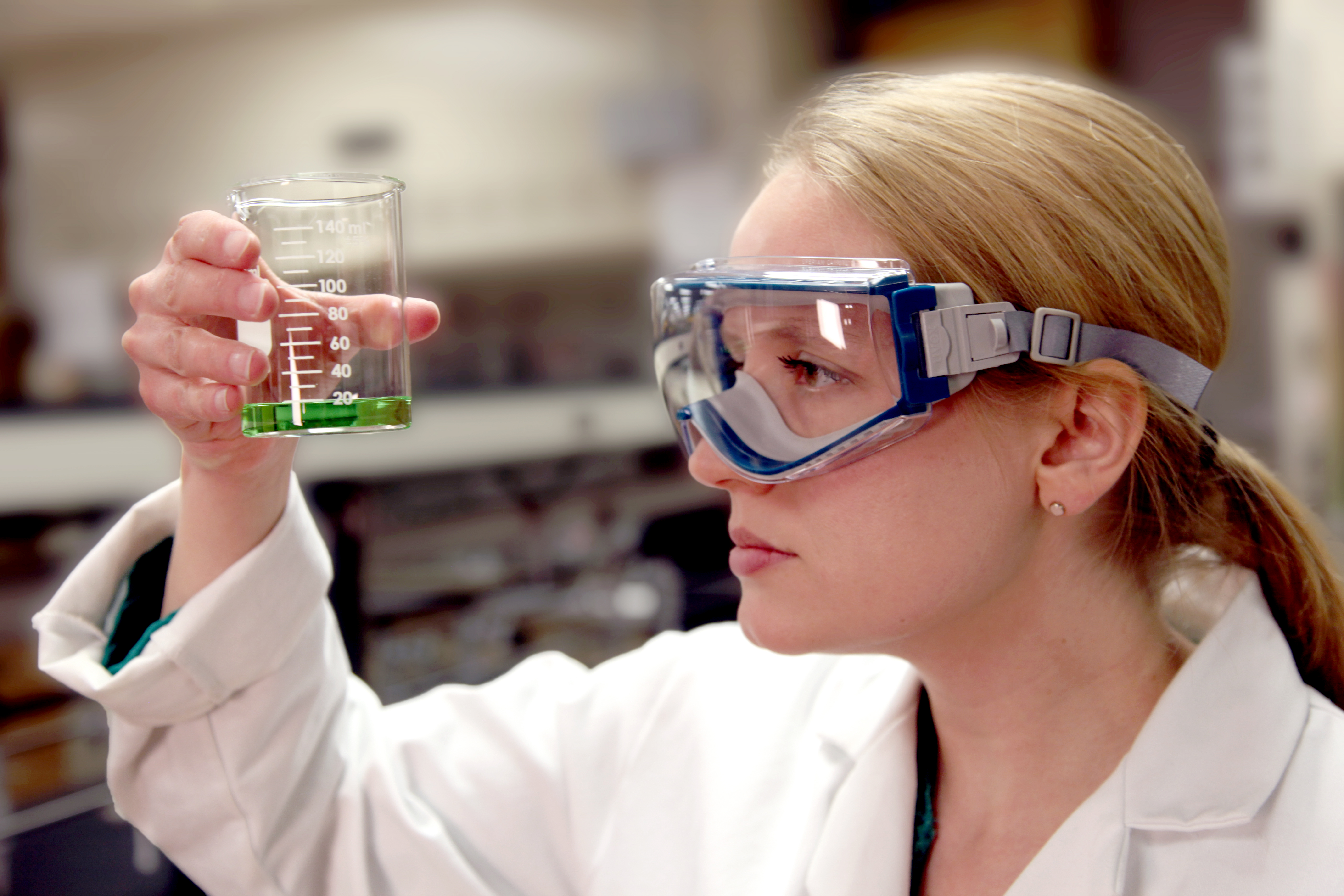Chapter 1. How Much Acetic Acid Is in Vinegar?
Introduction
Vinegar and olive oil are the primary ingredients in many salad dressings. Acetic acid, present in vinegar, gives vinegarette dressings their characteristic bite. Vinegar is an aqueous solution containing acetic acid as the solute. Your team has been hired by a producer of Italian dressings to perform a quality control analysis of the vinegar supply they currently use. The company has received complaints that one of their dressings does not have the usual zing expected from an Italian dressing. The company has concluded that the problem might be with the vinegar because the added seasonings and olive oil are okay. Your team is asked to determine the concentration (molarity and mass percent) of acetic acid in the vinegar sample. Your team was selected because of your reputation for performing exemplary titrations.

Goals
As you complete this investigation you will:
- Standardize an NaOH(aq) solution.
- Titrate a vinegar sample with the standardized NaOH(aq) solution.
- Measure the density of a vinegar sample.
- Calculate the molarity and mass percent of acetic acid in the vinegar sample.
- Report your results as directed by your instructor.

Materials

NaOH(aq) solution, approximately 0.5 M
Burets
10 mL or 15 mL pipets
H2C2O4·2 H2O or other solid acid
Phenolphthalein indicator
Erlenmeyer flasks
Other common lab equipment
Electronic balances
Getting Started
Titration is a common laboratory technique involving solutions. If the amount of Solute A is to be determined, and Substance B reacts with A in a chemical reaction, then Solute B is slowly added to A to the point where just enough “B” has been added to react with all of A. If the moles of B added are known, then the original amount of A can be calculated from the balanced equation.
In this application, a base will be added to an acid to reach the equivalence point. This is the point where just enough base has been added to react with all of the acid present. If the added moles of base are known, then the original moles of acid present can be calculated using the balanced neutralization equation. Similarly, if the original moles of acid present are known, then the moles of base added can be determined.
An indicator can be used to detect changes in pH during a titration and can also help identify the equivalence point. The equivalence point can be detected if a few drops of 1% phenolphthalein solution are added to the titration vessel. Phenolphthalein is an acid/base indicator that is colorless in an acid environment and red in a base environment. If a base is slowly added to an acid, with phenolphthalein present, the solution will start out colorless. As long as acid is present the solution will be colorless. When the solution is faint pink in color, enough base has been added to react with all the acid. This visual color change is called the end point of the titration. If too much base is added, then the solution will be red.
Your first task is to standardize the NaOH solution. This means you need to determine its molarity to at least three significant figures. You will need at least three acceptable titrations to standardize the NaOH(aq) solution using solid oxalic acid (H2C2O4·2H2O) or some other solid acid. Warning: You are working with strong acids and bases that are dangerous to skin and eyes. Rinse thoroughly if any acid or base gets on your skin or in your eyes. Why should you use a solid acid for the purpose of standardizing the NaOH solution?

You have two other tasks to accomplish in the lab. You must determine the density of the vinegar solution and the molarity of acetic acid in vinegar. The mass percent of acetic acid can be calculated from your data.
To accomplish your tasks, you will need to make very accurate volume and mass measurements. Burets and pipets are useful in accurately measuring volumes. The buret and pipet are described in Appendix G. Before you begin, make sure you understand their proper use.
Report
Submit a report written as directed by your instructor. Be sure to include all data and any calculations used to determine the required values. In your discussion, comment on the accuracy of the acetic acid content reported on the label of the vinegar bottle.
Caution:
While working in the laboratory wear your goggles at all times. You are working with strong acids and bases that can cause damage to skin and eyes.
